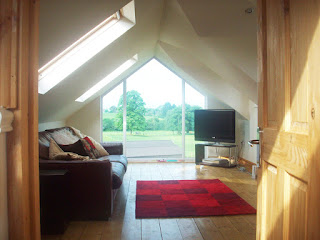They can be photos of staff working hard, before and after
shots, products available and any number of other subjects.
With nearly everyone owning a mobile phone with a camera,
taking up to date photos either for a website or social media can be a quick
and extremely easy way to advertise your work. However, many people think that
photos taken on a mobile phone can look grainy and unprofessional, and while
this can be true, there are tricks that can be used to make mobile phone photos
look better than you would expect….
How to
take better photos with your phone
1) Get Close
A lot of
mobile phone cameras, particularly the iPhone, really prove their worth when
you bring them close to your object. When you get close up, you can normally
have more control of lighting and stability. If there is a window in the
background, to avoid darkening the rest of the image, cut the window out, your
phone should adjust the lighting composition.
2) Crop,
Don’t Zoom
Most
smartphone cameras offer a digital zoom option, but you are nearly always
better off avoiding it completely. Your image will noticeably degrade the
moment you try to “zoom”, mainly because the camera is guessing what the image
looks like and it’s not very good at it!
However, if
you crop the picture, you’re simply sampling the information that has been
recorded, meaning that there is a higher resolution and quality to the picture.
3) There’s
an App for that…
It’s surprising how a photo can be changed just by playing with contrast, brightness or by using a “filter” and there are hundreds on Apps on the market to do this. However, when using a filter, less is more. Don’t be tempted to go overboard or go for the very popular “ retro” look, it isn't suitable for a website, although to some extent it can be used with social media, depending on the photo.
Whatever App
you pick, it’s worth spending a little time getting used it and learning the
functions… It can make all the difference.
Generally,
flashes on phones can’t handle the job. They are LED lights that are too close
to the camera, too bright and the duration of the flash is too long. This
causes many issues with a photo, usually making it blurry, giving people
“red-eyes” and it can wash the colour “temperature” of the photo out, making it
look grainy and yellow. But, what do you do if it’s dark? Unfortunately, even
with the newer smartphones, there is only so far you can push the technology in
low-light. Try looking for other light sources, or taking it at a certain time
of day when the sun is in a good place to light a room. This is generally first
thing in the morning or mid-afternoon.
5) Watch Out for Lens Flare
 A “lens
flare” is when light from a bright light source, be it the sun or a lamp,
flashes across the picture. It causes loss in detail, contrast and colour
accuracy. To prevent this, try moving to having the light source behind you,
this then lights the shot but stops a flare across the picture. You can also
cup your hand around the lens on your phone to create a DIY lens hood, cutting
the amount of flare down if the source is at the side of the frame.
A “lens
flare” is when light from a bright light source, be it the sun or a lamp,
flashes across the picture. It causes loss in detail, contrast and colour
accuracy. To prevent this, try moving to having the light source behind you,
this then lights the shot but stops a flare across the picture. You can also
cup your hand around the lens on your phone to create a DIY lens hood, cutting
the amount of flare down if the source is at the side of the frame.
6) Frame
Your Picture
When taking
your picture, think about positioning and balancing the shot. Make sure the
camera is straight and level with the subject. Most phones and digital cameras
have a “grid” option and this can be very helpful to ensure that you’re
balancing everything needed into the shot and “framing” it at the same time.
Focusing on points of interest and they’re placement in the photo is key. Take
several pictures of the same subject but at different angles – it’s easier to
find the best photo with lots of choice.
7) Steady
Does It
The most
common cause of a blurry picture is a photographer with shaky hands. Try
stabilising your arms against something, leaning against a wall or placing the
phone or camera on a solid surface.
8) Remove
Clutter
 Particularly
when it comes to website photos, clutter is a crime! If you’re taking a shot of
the bathroom you just fitted – move the tools and mess out of the way! If
you’re taking a picture of a beautiful kitchen – get rid of dirty cups and
plates in the sink! It makes a huge difference and means that a website
designer can use the whole picture rather than having to crop the mess out of
it.
Particularly
when it comes to website photos, clutter is a crime! If you’re taking a shot of
the bathroom you just fitted – move the tools and mess out of the way! If
you’re taking a picture of a beautiful kitchen – get rid of dirty cups and
plates in the sink! It makes a huge difference and means that a website
designer can use the whole picture rather than having to crop the mess out of
it. 
.jpg)
.jpg)

No comments:
Post a Comment